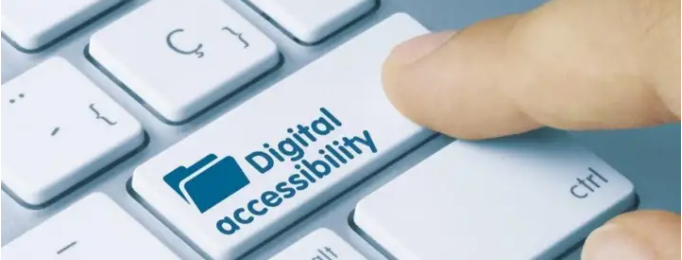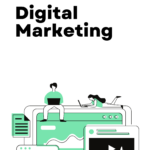Digital accessibility myths can create barriers to accessibility online. It is an essential aspect of modern web design, ensuring that people with disabilities can access and interact with digital content.
Website owners, designers, and developers must critically consider digital accessibility when designing websites. However, there are several myths surrounding the topic of digital accessibility that can hinder progress and create barriers for individuals with disabilities.
While it is true that creating accessible digital content requires a commitment of resources, the costs of not doing so can be much higher in terms of lost opportunities, legal fees, and damaged reputation. It’s important to understand that digital accessibility is not an add-on, but an integral part of the design process.
These myths can lead to misconceptions and a lack of understanding about how to create accessible digital content. In this article, we’ll take a closer look at five digital accessibility myths that you should know.
Significance of Digital Accessibility
The integrated disposable income for working-age Americans with disabilities is nearly $500 billion. They represent a sizeable chunk of the market and the target of organizations looking to cater to their online needs.
A well-designed and accessible website is key for capturing the market opportunity and enhancing the level of customer loyalty. Moreover, digital accessibility plays a crucial role in protecting your business from any negative feedback.
Types of Disability-Related Barriers
Some of disabilities that impact how an individual interacts with a website include:
- Auditory: Hearing loss from moderate to full deafness in both ears.
- Learning, cognitive, and neurological: Memory loss, difficulty retaining information, autism, etc.
- Physical disabilities: Involves missing limbs, arthritis, tremors, that interferes with browsing.
- Speech: Speech complexities like mutism, aphasia, and stuttering make it complicated to navigate websites needing voice interaction.
- Visual: Color blindness, low vision, and deaf-blindness.
How to Design for Digital Accessibility
There are different guidelines, practices, and standards available for making an accessible website.
The Web Content Accessibility Guidelines incorporates the three levels of success criteria. Level A, AA, and AAA, with level A considered to be the minimum eligibility to pass an accessible website.
Some of the most common and appropriate ways to make your site more accessible are listed below :
- Make use of clear and concise language to avoid confusion.
- Optimize the website for simple navigation using lists, links, and headings.
- Incorporate alternative text for images to help people with disabilities.
- Make use of color contrast in an effective way to make sure that text is visible against the background.
- Make sure that users can use your website without a keyboard or mouse.
- Make use of transcripts and captions for audio and video content.
Five digital accessibility myths busted

Myth One: Accessibility Considerations Only Benefit a Small Minority
15 per cent of the global population or 1 billion people live with some form of disability. This makes it impossible to make use of the digital products available in the market.
Most people do not identify as having a disability, but benefit from accessible websites.
- Elderly and those losing their hearing, mobility, vision, or cognitive ability.
- People with situational disabilities with restrictions in movement and hearing.
- People with temporary disabilities like a broken arm or concussion.
There is a need to understand that inclusion and accessibility go hand-in-hand with usability. An effective website design benefits all users, particularly people with disabilities.
Myth Two: Address Accessibility after project completion
Digital accessibility can be hard to implement at the end of a project. It makes more sense to incorporate accessibility at the start and throughout the project lifecycle. If you address accessibility issues at the end of a project, you could face:
- Layering accessibility will result in a bad design outcome.
- Delays in launching the project.
- Gives time to remediate more proactively.
Factoring accessibility from the start requires additional planning. However, it helps to save time and effort in the long run.
Myth Three: Making a website accessible is costly and time-consuming
The truth is web accessibility is cost-effective and time-saving. But many organizations hesitate to dip their toes into it fearing budget constraints and timelines.
Myth Four: Accessibility is Ugly
A common myth is accessibility spoils the user experience. However, the truth is most accessibility features are invisible, such as:
- Alt text for images help screen reader users to understand an image.
- Semantic tags help to make a page meaningful.
- Form labels offer context to fill out the form field.
- Accessible Rich Internet Application attributes make interactive components accessible to screen readers.
- Keyboard accessibility helps ensure the user can control the user interface components without using a mouse.
You can cover a lot of accessibility standards and guidelines with minor changes to your design. User experience improves when you incorporate accessibility features early on.
Myth Five: Digital accessibility applies only to websites
Federal laws around web accessibility is stringent in the U.S. The latest compliance laws in other countries like the EU, UK, Australia incorporate the WCAG guidelines.
Depending on the location and business you are in, you have to comply with the law of the land.
Fact: Digital accessibility is smart business
While accessibility is definitely the right thing to do, catering to more than a billion people with disabilities makes sound business sense.
For most businesses, perhaps the most convincing and valid arguments are those concerned with the bottom line. If you don’t take accessibility carefully, individuals with disabilities will face barriers when participating in your business. Start taking accessibility seriously today and do not give a ear to these five digital accessibility myths.
Conclusion
In conclusion, digital accessibility is a critical aspect of web design that should not be overlooked. The myths surrounding digital accessibility can lead to exclusionary practices and prevent individuals with disabilities from accessing important information and services online. As such, it’s important to debunk these myths and take a proactive approach to creating accessible digital content.
To ensure that your digital content is accessible, it’s crucial to educate yourself on the best practices for creating accessible content and to prioritize accessibility from the outset of any project.
Whether you’re a website owner, developer, or content creator, taking the time to understand and implement digital accessibility will not only benefit individuals with disabilities, but it will also improve the overall user experience for all visitors to your website. By dispelling the myths surrounding digital accessibility, we can create a more inclusive and accessible digital landscape for everyone.









